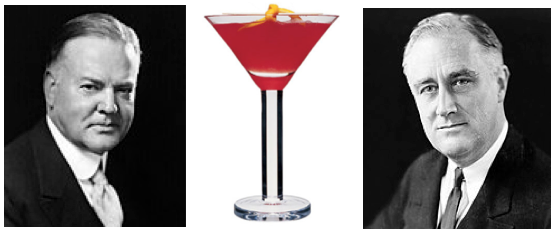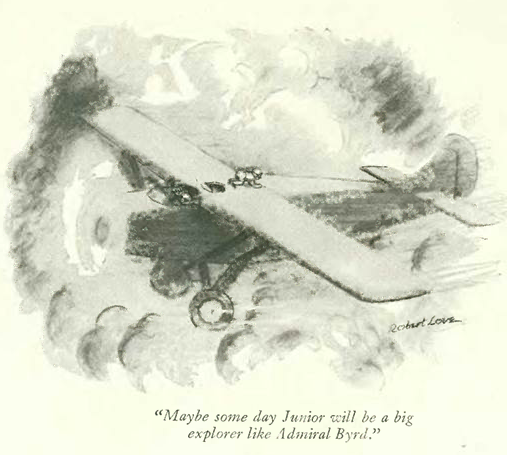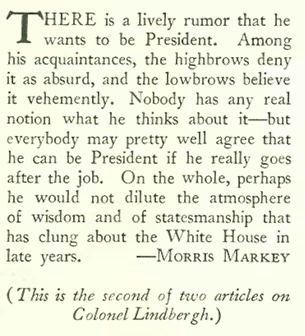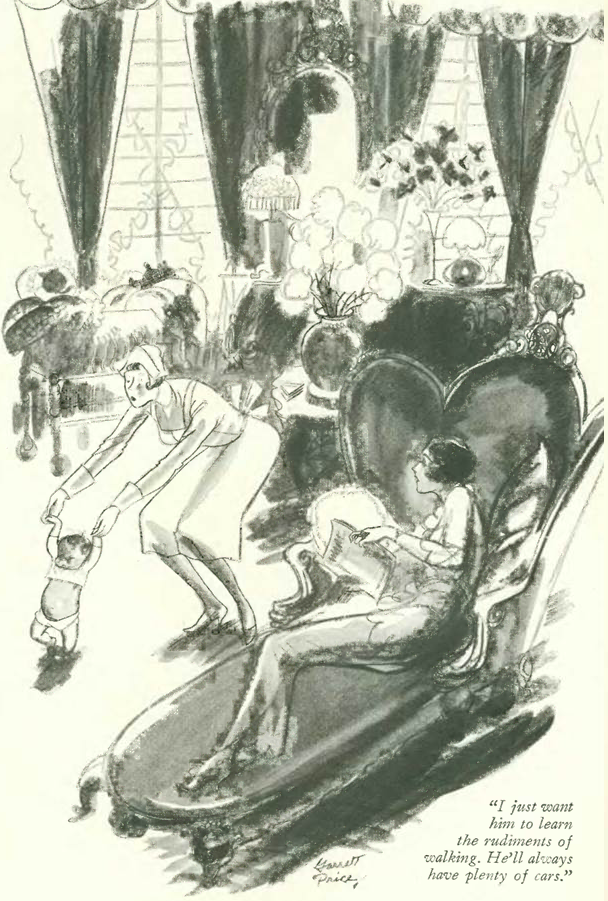Since I am posting this on the night before All Hallow’s Eve, let’s take a quick look back 89 years at Halloween 1930 through the pages of the Oct. 25, 1930 issue of The New Yorker…
…which featured a short story (excerpted below) by Sally Benson, who would write a series of shorts for The New Yorker in 1941-42 that were later published in her book, Meet Me in St. Louis. Note how Prohibition laws seemed to pose no obstacle to the Bixbys’ party plans:
Benson’s Meet Me in St. Louis would be adapted into a popular 1944 film starring Judy Garland. One of the film’s highlights featured the Halloween hijinks of Tootie and Agnes Smith (Margaret O’Brien and Joan Carroll).

…Halloween revels were also popular with the college kids…

…and of course Hollywood got in on the act, each studio issuing pinup-style images of major female stars to newspapers and magazines …

…the pages of the Oct. 25 issue contained other references to the holiday, including these Julian de Miskey spot drawings…
…and there were also ads offering both parties and party treats to those seeking some Halloween fun…
* * *
Not Exactly Whale Watching
On to our issues, the Oct. 15, 1930 edition featured a strange account (in “The Talk of the Town”) of a man who travelled the country with an embalmed whale carcass, which apparently drew large crowds wherever it was displayed.

The account is disgusting on a number of levels (the last line: “People simply love whales”). During my research I learned that these “whale tours” continued into the 1970s.
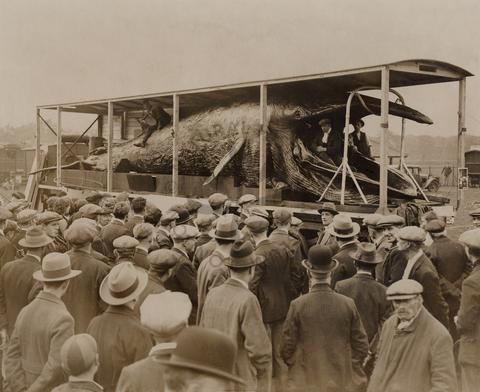
For further reading, author Lydia Pyne offers some history on this strange phenomenon at Not Even Past.
* * *
From Our Advertisers
The owners of the new Barbizon-Plaza Hotel at 106 Central Park South tried their best to lure the smart set (especially artists and musicians) to this “habitat” designed especially for them. Unfortunately, artists and musicians were as broke as everyone else, and the property was foreclosed on in 1933…
…and we have another appeal to the smart set, this one from the publishers of Vogue magazine (now a sister publication to the New Yorker, as both are now owned by Condé Nast)…
…and one more appeal to fashionable sorts, this time perfume in a bottle shaped like an art deco skyscraper…
…here is what one version of the bottle looked like in 1928, similar to ad above. According to the blog Cleopatra’s Boudoir, the We Moderns perfume was sold from 1928 to 1936 in bottles made in Czechoslovakia. The bottle below was made from glass, enamel (label), and the early plastic Bakelite (cover and base)…

…on to our color ads, I like this one because RCA induced the inventor of wireless radio, Guglielmo Marconi, to endorse their “Radiola”…
…and we have a beautiful illustration by Ellis Wilson for Dodge Boats…
…on to our cartoons, we begin with Denys Wortman…
…here’s the art of Rea Irvin on a full page…
…Helen Hokinson kept up the tradition of New Yorkers looking down on those backward Bostonians…
…Alan Dunn, illustrating the sunlamp fad of the 20s and 30s…
…and Jack Markow, checking on the progress of the Empire State Building…
On to the Oct. 25 issue, and the Broadway opening of the comedy Girl Crazy…

…which featured Ginger Rogers and Ethel Merman introducing the many hits from George Gershwin’s score including “I Got Rhythm” and ‘Embraceable You.” The plot was simple: a young New York playboy is banished by his family to a dude ranch in Arizona to keep him out of trouble…where of course he finds trouble. The orchestra for the Broadway performance included such talents as Benny Goodman, Glenn Miller, Jimmy Dorsey, Jack Teagarden, and Gene Krupa.

* * *
More from Our Advertisers
Ads from the Oct. 25 issue included this recurring one from the promoters of the Empire State Building, marking progress through various historical vignettes…
…the ad accurately depicted the building’s progress, measured against these images below…
…and we have more radio ads…no endorsement from Marconi here, but the makers of Fada claimed their receiver was far less annoying than their rivals…
…while Atwater Kent touted the convenience of its new “Quick-Vision Dial”…
…as I’ve previously noted, backgammon was all the rage in 1930, so much so that this clothier even advertised a special frock for the game…
…and what would the 1930s be without smoking tied to athletic prowess…
…and remembering friends and family in California in 2019 as they battle wildfires across that great state…
…on to our cartoons, Garrett Price introduced us to a man with a peculiar taste in pet canaries…
…Barbara Shermund illustrated the startling views afforded by rail travel…
…and Peter Arno leaves us in a moment of religious ecstasy…
Next Time: Risky Business…












































